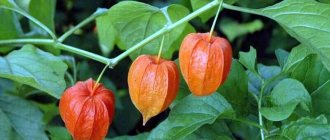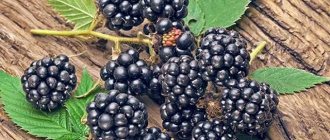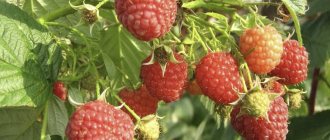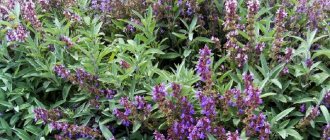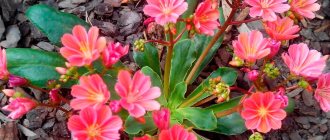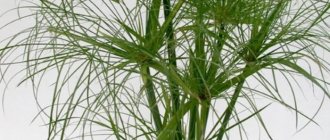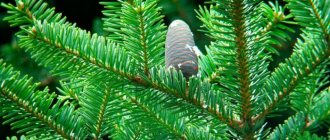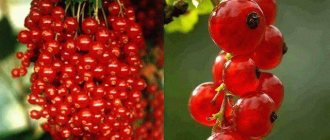- September 2, 2018
- Trees and shrubs
- Yulia Kazakova
The Indian elk plant is quite common and has many beneficial properties. Elf belongs to the Elaeaceae family and the genus of shrubs and trees. It can be either evergreen or deciduous. A distinctive feature of this plant is the beauty of its young shoots of a silvery hue. During flowering, the tree is covered with fragrant yellowish-green flowers. It is worth seeing the Chilean gooseberry plant in the photo. You can understand what beneficial properties this plant has and how it is grown by reading this article.
Places of growth of the Chilean oleaster and Indian
Where does it grow? The Hindustan Peninsula is the birthplace of the Indian sucker. This tree-like shrub was also revered in ancient China. “A tree with magical properties” - this is what the locals believed. These magical properties can rejuvenate the body and give strength.
Settlers from Japan brought this plant to Sakhalin Island, which is how it first came to Russia. Residents of Japan planted it around their houses.
Silver oleaster in landscape design
The silver-leaved shrub known as the eelgrass adds originality to any garden. This plant lasts almost until frost and sheds its leaves most often in November. The shrub does not change its silver-white leaf color throughout the entire period.
Thanks to its original color, the shrub can be used for original landscape design - silver leaves go well with red or golden leaves.
The plant grows quite slowly, which makes it possible to use it as a hedge. Shrubs can be pruned to form low bushes with dense branches. Silver oleaster looks good combined with coniferous trees and shrubs in city gardens, and in autumn golden maple adds a special zest.
Kinds
The following representatives of this family exist:
- Narrow-leaved. A tree or shrub of large or asymmetrical shape, reaching 8 m in height and 4-6 m in width. It has a curved trunk and a spreading crown. At a young age it grows quite quickly. It loves light, is resistant to drought, has a deep root system, and copes well with smoke and air pollution. This species is quite frost-resistant; sometimes only the ends of the shoots freeze. Distributed in the southern regions of the Russian Federation, in Kazakhstan, in the regions of Central Asia and the Caucasus countries.
- Multi-flowered. Non-thorny fruit shrub. It reaches a height of 1.5-3 m, has oval or oblong-oval leaves. The fruits are red, juicy, large, and have various healing properties. The plant grows in late April-early October. Has an average growth rate. Flowering occurs in June, and the plant bears fruit in August. Tolerates winter. Can be found in Japan and China.
- Silver. Slow growing shrub without thorns, large and wide. It reaches 3-4 m in height and width. It begins to bloom in May-June. The plant forms thickets due to a rather large number of offspring. The regions of North America are the natural habitat of this species.
- Barbed. The shrub has a dense evergreen crown, reaches a height of 7 meters, has spreading branches covered with thick spines. Clinging to other plants with its lateral branches, prickly oleaster can often develop as a climbing shrub. The leaves are wavy along the edges, have an oblong elliptical shape, they are shiny, dark green in color. The homeland of the plant is Japan.
Eleven angustifolia - Jida tree: the whole truth about wild olive
A small tree of the Lokhov family is common in China, Japan and Europe. There are many species - about 100, but one of them grows on the territory of Russia - Elk angustifolia. Moreover, it is found only in the southern European part of our country, as well as in the Caucasus, the Urals and Siberia. This garden plant is known in our country as Bukhara jida.
In the description of the plant it is called jujube, Chinese date, unabi, wild olive, sucker and a dozen other names!
It is grown for its fruits - sweet and tart, hard, terracotta-colored berries. The tree is easy to care for, grows well in different soils, does not require much moisture, and is frost-resistant. You don’t see it too often in Russian areas, but in China, its homeland, it occupies a leading place in gardens as a valuable fruit crop and medicinal plant.
Read also: Growing acanthus in a summer cottage
Botanical description
Indian elk is a low tree or shrub. It has a wide crown, shiny red-brown bark, covered with thorns. The plant has a powerful root system that penetrates deeply into the soil. The leaves are oval or lanceolate, narrowed at the base, acute at the apex, white below and gray-green above. The petioles of the leaves reach a length of up to 7 cm. The small flowers have a pleasant aroma, are rich in nectar, and serve as a honey plant. Blooms for 15-20 days.
The fruit of the plant is sweet and has a spherical or oval shape. Ripens in August-September. Sucker is characterized by uneven ripening, therefore, for it to ripen completely, a warm, long period is needed. The fruits also fall off unevenly after ripening. The tree begins to bear fruit at the age of 3 to 6 years.
Elf bush: traditional medicine recipes
As already mentioned, the shrub is actively used in medicine for various diseases. Traditional healers know when to collect oleaster fruits and at what time its flowers are most beneficial for the body.
Among other things, sucker is an excellent honey plant, so beekeepers often place their hives near plantings with this shrub.
People generally tolerate oleaster fruits and infusions well, but pregnant women and children should consult a doctor before taking this product.
Recipes for use:
- Jam. Rinse 1 kg of fresh berries under running water, dry, and pierce each berry with a needle. Boil in boiling water for 4-5 minutes. Boil the syrup - 1 kg of sugar and 500 ml of water, cook, stirring until the sugar is completely dissolved. Pour over the prepared berries and let stand for 3.5-4 hours. Boil for 15 minutes and leave again for 4 hours at room temperature. Repeat the procedure twice, after which the hot jam is packaged in sterilized jars, rolled up and wrapped in a blanket.
- Wine. Wash 1 kg of fresh jida berries, dry them and put them in a 3 liter jar. Add 1 kg of sugar to the berries, mix and add a little purified water. Hide the jar in a dark, warm place for 25-30 days, then drain the resulting wine and place it in the cellar.
- A decoction for inflammation. Pour 30 grams of prepared dry berries into 200 ml of boiling water and boil for 30 minutes in a water bath. Strain and add boiling water to the original volume. After cooling, put the broth in the refrigerator and store for no more than 48 hours. Take 2 large spoons three times a day 15 minutes before meals.
- Tincture of oleaster flowers. For 1 liter of moonshine or vodka you need to take 100 g of oleaster flowers (you can take fresh or dried). Infuse the liquid for 30 days in a dark glass container. Dilute 25 drops of tincture in 100 ml of water at room temperature, take once a day.
The berries of the bush are also often thrown into ordinary compote, which can be given to children as a means to strengthen the immune system and improve performance.
Meaning and Application
Chilean oleaster wood is used in the manufacture of furniture and musical instruments, and is used in landscape architecture. This plant is also used to dye fabric and leather.
Resembling dates, oleaster fruits are used to make wine and jam. They can be stored all winter at room temperature. Sucker fruits contain potassium and phosphorus salts, up to 50% sugars, amino acids and vitamins. Used both fresh and frozen.
A decoction of the fruit serves as an excellent expectorant; it is also used to treat respiratory diseases. Decoctions and tinctures obtained from the flowers of the Indian oleaster are used to treat scurvy, gum diseases, and purulent wounds.
The fruits of the plant can also be used to improve memory, as they contain a lot of potassium, phosphorus and organic acids. Also, preparations made from the fruits of this plant have a good effect on the cardiovascular system.
Useful properties of berries
In first place in terms of the benefits of the plant are its berries.
They provide effective assistance with:
- high blood pressure (reduce it);
- problems with the heart and blood vessels (a successful combination of vitamins C and P perfectly strengthens the walls of blood vessels, the high potassium content facilitates the functioning of the heart); colds;
- bronchial diseases, pharyngitis, laryngitis (pronounced expectorant effect);
- neuroses (calming effect, helps improve memory);
- weakened immune system;
- diseases of the kidneys, gastrointestinal tract, liver (diuretic);
- diarrhea (due to astringent properties).
It has been proven that 15 berries eaten daily during the season provide significant relief from various ailments. If it is not possible to consume fresh fruits, they can be used dried.
Several recipes
- For intestinal upset, a decoction of the fruit is prepared. Pour a couple of tablespoons of berries with a cup of boiling water and cover. You can drink as soon as the broth has cooled. After eating, take a few large spoons. Boiled fruits (5-6 pieces) will also have a fixing effect.
- Applying leaves plucked from a tree to purulent wounds leads to healing. Several clean leaves are placed on the affected area and secured with a cotton or linen bandage. The procedure is usually repeated for several days.
- The leaves relieve suffering from rheumatism, gout and radiculitis. They cover the sore spot, cover it with gauze or any cotton cloth, then secure it with an elastic bandage or soft scarf. The procedure is carried out at night.
- An infusion of flowers cures coughs, stimulates cardiac activity, lowers blood pressure and reduces high body temperature. A handful of dried flowers is poured with a cup of boiling water and kept in a water bath for 10 minutes. The drink is drunk several times a day.
- Alcohol tincture. The flowers are poured with vodka (1 part color to 10 parts vodka) and left in the dark for 10 days. The elixir is drunk several times a day, half a small spoon.
Disembarkation conditions
Since the Chilean sucker is well resistant to urban gases, it is used to create hedges that tolerate cutting well. The silver color of the leaves also looks impressive in plantings.
Since the plant has a deeply penetrating root system, it is used to strengthen the soil along the banks of reservoirs. Sucker is also capable of enriching the soil with nitrogen, since nodules containing symbiotic nitrogen-fixing bacteria form on its roots.
What is the plant used for?
Sucker has a large number of positive properties that are used in various fields:
Ethnoscience. Due to the abundance of useful substances, such as phosphorus and potassium salts, a number of amino acids and vitamins, the fruits are actively used for medicinal purposes. They are consumed fresh or frozen for storage. Decoctions of drupes are an excellent expectorant and are used for respiratory diseases. Fresh fruits and preparations based on them help improve memory and strengthen the cardiovascular system. Flowers are no less useful. Tinctures made from them are used to treat scurvy and various diseases of the oral cavity, as well as to wash and speed up the healing of wounds.
- In industry. The wood of members of the family has unique properties, which is why the bodies of musical instruments and furniture are made from it. The leaves and bark of the plant contain tannins, which are used in the textile industry for dyeing fabrics and also for tanning leather.
- For decorative purposes. Indian elk is planted to improve the environment in parks and alleys. The shrub is unpretentious, easy to trim, dust and harmful substances do not pose a threat to it, so in urban conditions it is easy to create beautiful hedges from it. In addition, due to its strong root system, the plant is planted along the banks of reservoirs to avoid their shedding.
Planting and care
The plant reproduces both vegetatively and by seed. However, it takes root only after 2 years. Elf is preferably planted at the end of autumn or at the beginning of the growing season in areas protected from the wind. The distance between planting trees should be about 2-3 meters.
First, sand and prepared compost are added to the planting hole. It is also necessary to add double superphosphate and fertilizers that contain wood ash and nitrogen. The first days the plant must be watered abundantly. Then they switch to moderate watering.
We should not forget about annual fertilizing with organic and nitrogen fertilizers; it is also necessary to dig up the tree trunk circle. Since the sucker grows very quickly, hedges should be trimmed annually.
Balanced fertilizers are applied in early autumn. Young Chilean oleaster trees are covered for the winter, as they are sensitive to frost. In the spring, branches that are damaged and dried out during the winter are pruned.
Methods for preparing jida
Leaf fruits can be consumed fresh or processed.
Ripe berries, picked from the tree, are simply eaten throughout the day. Compote made from fresh berries has healing properties. The drink even helps with a hangover. However, you can also make preparations for the winter.
In addition to berries, the flowers of the tree and its leaves will have a healing effect. Flowers are collected during the flowering period, when all the buds have opened, and leaves - at the beginning of summer, when they have not yet lost their virgin freshness.
To speed up the drying process, both flowers and leaves are dried in the oven at a low temperature (not higher than 60 degrees C).
If possible, it is better to dry fruits naturally - in a warm place under a canopy (not in open sunlight). The berries are laid out on a tray in one layer. Before drying, they must be washed with running water, since trees and shrubs in the garden are sprayed against pests and fungal diseases.
Read also: Features of caring for marigolds when grown on the balcony
What is prepared from fruits
- Jam (does not have a particularly interesting taste. Sweet, without sourness), the same applies to jam.
- Candied fruits and jellies (used in confectionery for decoration, but do not have a medicinal effect).
- Flour (ground dried berries are used in baking - they prolong the storage of bread).
- Dried fruits (can be used for making compote, added to baked goods, or eaten several pieces for general health).
- Homemade wine (it has a pleasant taste and delicate aroma).
Usage
Elf Chilean is very popular for creating topiary groups and hedges. It easily tolerates cutting and bush shaping. The color of the leaves allows you to choose contrasting plants to match it. The unusual nature of the shrub allows you to create unique ensembles from a combination of coniferous, deciduous and herbaceous plants.
Some varieties of sucker have spines. Planting such plants in an area where there are small children should be done with caution.
The needles of the sucker are very hard and sharp. The injections may be too painful. In addition, the sucker is an excellent honey plant. Therefore, the bees that have chosen it can pose a danger to small children.
